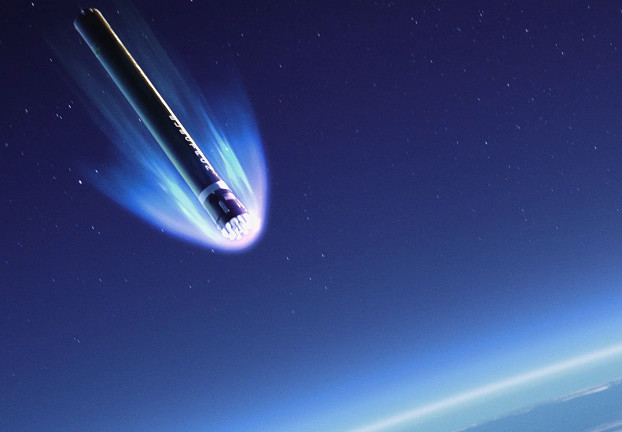
Rocket Lab to Deliver Payloads to the Moon by 2020 Using The New Photon Spacecraft
Smallsat launcher Rocket Lab announced at the International Astronautical Congress plans to begin missions to the Moon in the near-future, using a new satellite launch platform it has developed called Photon.
The company said it would support extended range missions to medium, geostationary, and lunar orbits.
Rocket Lab will combine its Electron launch vehicle -- used less than two years to launch low Earth orbit (LEO) for small satellites -- Photon small spacecraft platform, and a dedicated bulk maneuver stage to accomplish extended-range missions and deliver small spacecraft to lunar flyby, Near Rectilinear Halo Orbit (NRHO), L1/L2 points, or Lunar orbit. These capabilities can then be expanded to deliver even larger payloads throughout cis-lunar space, including as high as geostationary orbit (GEO).
Rocket Lab Founder and Chief Executive, Peter Beck, says there is increasing international interest in lunar and beyond LEO exploration from government and private sectors.

“Small satellites will play a crucial role in science and exploration, as well as providing communications and navigation infrastructure to support returning humans to the Moon – they play a vital role as pathfinders to retire risk and lay down infrastructure for future missions,” he says. “Just like LEO small spacecraft, many potential exploration instruments and full satellites are on shelves waiting for launch to deeper space. In the same way we opened access to LEO for smallsats, Rocket Lab is poised to become the dedicated ride to the Moon and beyond for small satellites.”
Rocket Lab says it has gained experience gained multiple orbital Electron launches, and has also made iterative performance improvements to Photon’s Curie propulsion system. All systems for extended missions are derived from flight-proven equipment, including the Curie engine, Kick Stage, Electron composite tanks.
Rocket Lab’s most recent mission, ‘As The Crow Flies’, was the company’s 9th Electron launch and it saw Electron’s Kick Stage deploy a payload to an altitude of more than 1,000 km. The mission demonstrated recent upgrades to the 3D-printed Curie propulsion system for Photon, including the move to a bi-propellant design for improved performance.
Photon is an approximately 50 kg wet mass platform, capable of carrying up to 170 kg of payload to low-Earth orbit. It is architected for use in both LEO and interplanetary missions, with radiation-tolerant avionics, deep space-capable communications and navigation technology, and space-storable propulsion capable of multiple restarts on orbit.
Customers who want to buy an Electron mission to the Moon will be able to include their own spacecraft weighing up to 30 kilograms on Photon. But they will also be able to use the Photon platform themselves as an additional spacecraft, and use it as they see fit in lunar orbit.
The company says they already have customers lined up for the first lunar missions, which they hoped to begin launching by the end of 2020. Rocket Lab has not revealed how much these missions will cost.














